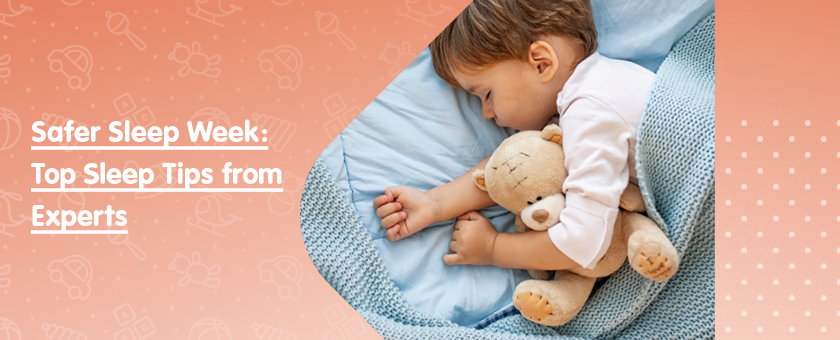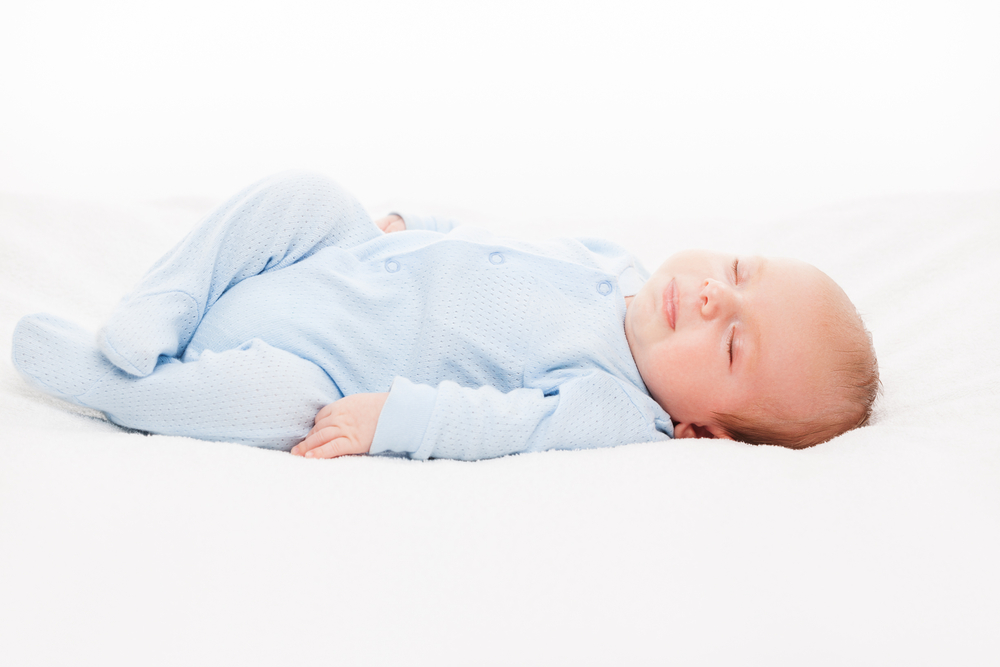Sleep is one of the biggest concerns when it comes to being a new parent; getting enough of it yourself, making sure your baby is getting enough sleep and making sure they are safe all at the same time can be hectic. Sleep is so crucial to everyone’s well-being, so we spoke to some sleep experts, including Katie Amies – The Gentle Sleep Coach and Maria White, to get their advice on safely putting your little one to sleep.
Katie is accredited as a Level 6 Holistic Sleep Coach and belongs to the Association of Birth & Baby Professionals, so she has a lot of great advice for parents when it comes to safe sleep. She is passionate about helping parents on their journey and believes there is no better place to start than with sleep. Along with Katie and Maria’s advice, we have pulled together some of the best advice on safe sleep for your little one.
Safe sleeping
In this section, we’ll give you expert advice on how to keep your baby as safe as possible when sleeping.
What position should your baby sleep in?
The Lullaby Trust recommends that the safest way for a newborn to sleep is on their back – feet to foot of the crib (unless parents are told otherwise by a medical professional). The position your newborn sleeps in is one of the most protective actions you can take to ensure they are as safe as possible while sleeping.
Once your baby has started to roll over onto their tummy by themselves, they can choose their favourite sleeping position. This is no reason to panic; it is their choice and preference. It can, however, sometimes disrupt sleep whilst they are still figuring out what they prefer. Plenty of practice rolling over in the daytime can help to minimise the disruption.
Where should a baby sleep?
A baby should sleep in their parent’s bedroom for at least the first 6 months and in a Moses basket or a next-to-be crib. You’ll be close enough to your baby for night feeds, to comfort them, to make sure they’re hot or cold in the night and that they’re safe. Your newborn baby should sleep on a firm mattress with a fitted sheet on that isn’t loose, without duvets, blankets, pillows or comforters.
Once your baby reaches 12 months old, you can introduce light blankets and duvets.
What should my baby sleep in?
To reduce the chance of Sudden Infant Death Syndrome (SIDS), your baby should sleep in a sleeping bag or use a swaddle to wrap them up. Using a duvet, blanket or pillows is not recommended until they reach around 12 months old, as your baby can get trapped underneath them.
What about tummy sleeping?
Once your baby has started to roll over onto their tummy by themselves, they can choose their favourite sleeping position. This is no reason to panic; it is their choice and preference. It can, however, sometimes disrupt sleep whilst they are still figuring out what they prefer. Plenty of practice rolling over in the daytime can help to minimise the disruption. Until then, babies should be placed flat on their backs to sleep.
Tips on getting your baby to sleep
In the first few months of your angel getting to know the world, their social, emotional and intellectual skills slowly mature. During this time, new experiences can cause your little one to create new things to worry about, be conscious of, think about and be afraid of.
However, you also need to rest! So, we’re going to break down what you can do to help your bub get some ZZZ and stay snoozing.
Here are some top tips on getting your baby to sleep:
- Have a good, consistent bedtime routine
- Regular naps during the day at the same time for the same length
- Connection before bedtime is everything, so shower your baby with love and cuddles
- Sensory input, such as white noise
- Create a comfortable environment
Here are some ideas on how you can achieve the top tips for sleep.
The five B’s
Many parents used the five B’s method to introduce a routine to get their baby relaxed and ready for sleep. The five Bs are bath, book, bedtime songs, baby massage, and bottle/breastfeeding. A consistent bedtime routine can work wonders.
Bath time is an essential part of the bedtime routine because it is soothing and helps to relax them, as does baby massage. Not only are these great for calming, but they’re a lovely bonding experience too that will make your baby feel safe and secure. Reading to your baby is great for their development, as is singing a song to them or allowing them to listen to soothing music and doing this before bedtime signals to them that it’s almost time for sleep.
Comfortable space to sleep
Learn the cues
Similar to how your little one will start to take cues from their bedtime routine, you can also learn to take cues from them. As newborns don’t follow a set schedule, knowing their signs of sleepiness is essential. It’s important to look out for overtiredness, too, as it’ll take your cherub much longer to doze off if they’re overfatigued. Some common cues that your baby is sleepy include yawning, rubbing their eyes or head, being fussy and not holding your gaze.
It’s also important to realise whether the routine is working for your baby or not. Some babies enjoy a massage, whereas others don’t. With some babies, a bath is calming and soothing and will help them sleep, but with others, it gets them all excited and ready for playtime.
Create a nappy-changing strategy
Many parents will change their child’s nappy post-feed to keep timings between nappy changes short. But listen up, mummies and daddies – pre-feed changes can actually work better when trying to get babies to snooze. Changing post-feed can cause them to become alert right before bedtime, whereas if they’re already changed, they can fall into a peaceful slumber a lot sooner.
White noise
Introducing white noise creates a gentle hum which will mask any other noises that may stir or wake your little one. There are white noise apps you can install on your phone, or you can buy special white noise toys for the nursery. Some examples of white noise replicate the same sounds your baby will have heard in the womb, and just like adults, babies can find silence unsettling.
Dim the lights
If your baby sees light, it signals daytime to them. Therefore, blocking the sun will help them fall into a peaceful slumber, so we recommend shutting out as much light as possible. That said, some babies like to sleep with a nightlight. Many nightlights designed for babies are dimmable, so they aren’t too bright for them to drift off to a restful sleep.
We hope you feel more confident now in putting your baby to sleep safely, and now you’re also equipped with new ones to try and get them to sleep in a comfortable and safe environment. Take what you need from this post and leave what you don’t, and hopefully, you can come up with a bedtime routine that works for you and your family.



